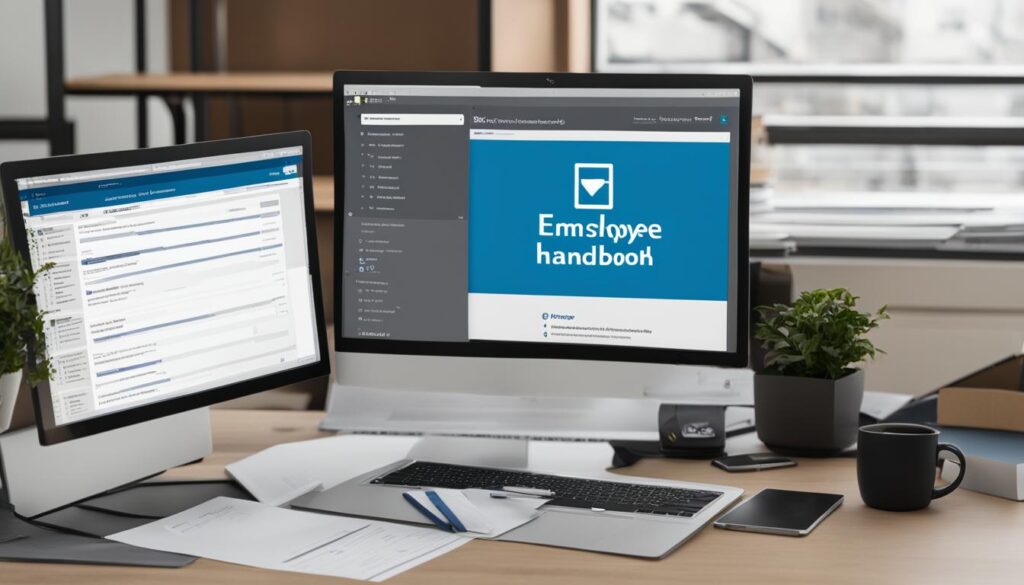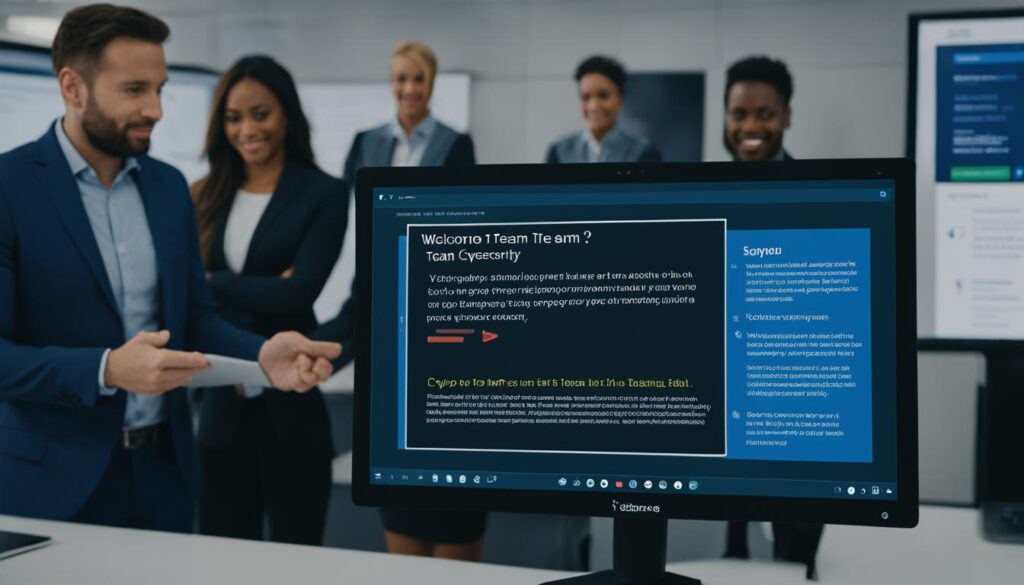Welcome to the world of Smartsheet employee onboarding! As an organization, we understand the significance of a seamless onboarding process that sets new employees up for success from day one. In this article, we will explore the importance of employee onboarding, the different types of onboarding, and the tools and templates offered by Smartsheet to enhance the onboarding experience.
The employee onboarding process goes beyond just the first day of orientation – it begins during the recruitment and hiring stages. Effective onboarding helps candidates understand the company culture, align with organizational goals, and feel prepared for their new role. By utilizing onboarding software and HR systems, we can automate the delivery of electronic documents and provide online multimedia information to new hires.
Proper training is also a crucial component of the onboarding process. By reducing learning curves and ensuring consistent customer satisfaction, we empower our employees to hit the ground running. Smartsheet offers a wide range of onboarding templates and checklists that can be customized to suit the specific needs of your organization. From an onboarding checklist for managers to a 90-day onboarding plan for sales, we have you covered.
Key Takeaways:
- Employee onboarding is a comprehensive process that starts during recruitment and hiring.
- Automation through HR systems can streamline the onboarding process by delivering electronic documents and providing online multimedia information.
- Proper training reduces learning curves and ensures consistent customer satisfaction.
- Smartsheet offers a variety of customizable onboarding templates and checklists.
- By utilizing Smartsheet’s tools and following best practices, organizations can create a structured and effective onboarding program.
Types of Onboarding and Best Practices
In order to ensure a smooth transition for new hires, it is essential for organizations to have effective onboarding practices in place. There are different types of onboarding that play a crucial role in helping new employees adapt to their roles and integrate into the organization.
Pre-boarding
Pre-boarding is a proactive approach to onboarding that starts before the new hire’s first day. It involves providing candidates with information about the company, its values, and expectations. This can be done through email communications, welcome packets, or even virtual tours. Pre-boarding sets the stage for a positive onboarding experience and helps new employees feel prepared and excited to join the organization.
Orientation
Orientation is the initial phase of onboarding and is typically conducted on the first day or week of a new hire’s employment. During orientation, employees are introduced to the workplace, its culture, and company policies and procedures. This is an opportunity for new hires to meet their colleagues, ask questions, and become familiar with their immediate surroundings. Orientation sets the foundation for a successful integration into the organization.
Training
Training is an essential component of onboarding that equips new hires with the skills and knowledge they need to perform their job effectively. This may include both technical training and on-the-job training. Providing comprehensive training ensures that new employees are equipped with the necessary tools to succeed in their roles. It also helps to reduce the learning curve, boosts confidence, and promotes consistent customer satisfaction.
Implementing best practices for onboarding is key to maximizing its effectiveness. Clear communication is crucial throughout the entire onboarding process. This includes providing new hires with all the necessary information and resources to succeed in their roles. It is also important to set clear expectations and goals for performance. Regular feedback and evaluation of the onboarding process allows organizations to make necessary adjustments and continuously improve the onboarding experience.
An effective onboarding system is designed to make new employees feel welcome, supported, and valued. It helps them understand their roles, responsibilities, and expectations within the organization. By implementing these best practices, organizations can ensure a successful onboarding experience that sets the stage for long-term employee engagement and retention.
Smartsheet Onboarding Templates and Tools
Streamline your onboarding process with Smartsheet’s comprehensive range of onboarding templates and tools. These resources are designed to help you create a structured and efficient onboarding program that sets your new employees up for success from day one.
Smartsheet offers a variety of onboarding templates, including:
- An onboarding checklist for managers
- An IT onboarding checklist
- A developer onboarding checklist
- A 90-day onboarding plan for sales
- An onboarding schedule template
- An executive onboarding template
- An onboarding feedback form
These templates can be customized to fit the specific needs of your organization, providing a comprehensive guide for the onboarding process. Whether you’re onboarding a new manager, an IT professional, or a sales representative, these templates will ensure that no important steps are missed.
In addition to the onboarding templates, Smartsheet also offers features such as easy collaboration and real-time tracking, making it easier than ever to manage the onboarding process. With Smartsheet, you can easily assign tasks, track progress, and collaborate with your team to ensure a seamless onboarding experience.

With Smartsheet’s onboarding templates and tools, you can streamline your onboarding process and provide a seamless experience for your new employees. Take advantage of these resources to improve efficiency, reduce errors, and ensure that your new hires feel welcomed and supported from day one.
Benefits of Successful Onboarding
Successful onboarding has numerous benefits for both the employee and the organization. It leads to higher job satisfaction, lower turnover rates, and better employee performance. Effective onboarding helps employees understand their roles, fosters a sense of community and support, and increases productivity. It also reduces the expenses associated with turnover and ensures that employees feel valued and engaged.
Onboarding can maximize new employees’ productivity, help them adapt to the company’s culture, and increase their longevity with the organization. By providing a smooth transition process and comprehensive training, employees are equipped with the tools and knowledge needed to succeed in their roles.
Organizations that prioritize successful onboarding create an environment that values employee satisfaction and engagement. This leads to a higher retention rate, as employees feel a strong sense of belonging and are more likely to stay in the organization for the long term. Reduced turnover not only saves the organization time and money spent on recruiting and training new hires but also maintains consistency and stability within the team.
Investing in a comprehensive onboarding process has become more important than ever, as it directly impacts the success of the organization. Providing a positive onboarding experience sets the stage for a productive and fulfilling work environment, where employees are motivated to perform their best.
With employee satisfaction as a priority, organizations can create a culture of loyalty and commitment. By implementing effective onboarding strategies, organizations can unlock the full potential of their employees and establish a strong foundation for long-term success.
The Importance of Onboarding in Today’s Workforce
The current job landscape and the entrance of the millennial generation into the workforce highlight the importance of onboarding. As the job market grows and employees have more options, a strong onboarding process becomes critical for organizations to attract and retain talent.
Millennials, in particular, may face challenges transitioning into the workforce and may require more resources to succeed. A comprehensive onboarding plan that includes clear communication, resources, and support can help new hires, especially millennials, feel valued, engaged, and equipped to succeed in their roles.

Expert Insights on the Benefits of Onboarding
Experts in the field acknowledge the numerous benefits associated with a successful onboarding process. By implementing an effective onboarding program, you can expect to see higher levels of job satisfaction among new employees, a reduction in turnover rates, and improved overall performance.
One of the key advantages of a well-structured onboarding program is its ability to set new employees up for success. Through comprehensive onboarding, you can help new hires gain a clear understanding of their roles and responsibilities, familiarize themselves with the company’s culture, and contribute to its overall success.
Investing in an onboarding program demonstrates your company’s commitment to supporting its employees and increasing their chances of long-term success within the organization. This commitment can have a significant impact on employee engagement and retention. By making new hires feel valued and engaged from the outset, you can boost productivity and foster longer tenures within your organization.
On the other hand, the absence of an effective onboarding program can lead to higher turnover rates and disengaged employees. Without providing the necessary support and resources during the onboarding process, new hires may struggle to acclimate to their roles and the company’s culture, resulting in diminished job satisfaction and decreased productivity.
Investing in an effective onboarding program can significantly benefit your organization in terms of employee engagement, retention, and performance. By prioritizing the onboarding experience and providing the necessary tools and support, you can set the stage for long-term success and foster a positive organizational culture from day one.
- Higher job satisfaction
- Lower turnover rates
- Better overall performance
- Increased employee engagement
- Improved productivity
- Longer employee tenures
Conclusion
Employee onboarding is a critical process for organizations to ensure the successful integration of new hires. Smartsheet offers a range of onboarding templates and tools that can streamline the onboarding process and enhance the new hire experience. By utilizing these templates and following best practices, organizations can create a structured and effective onboarding program that maximizes employee satisfaction, reduces turnover, and boosts performance.
With the help of an employee onboarding checklist, organizations can ensure that all necessary tasks are completed during the onboarding process. These checklists provide a roadmap for HR professionals, managers, and mentors to guide new hires through the necessary steps, such as completing paperwork, setting up access to systems, and attending orientation sessions. By using onboarding templates, organizations can customize the checklist and tailor it to their specific needs, ensuring a smooth and consistent onboarding experience for every new hire.
Creating a positive new hire experience is crucial for organizations to attract and retain top talent. Through clear communication, providing necessary resources, and offering support, organizations can set new employees up for success from day one. By leveraging onboarding templates and tools, organizations can enhance the onboarding process, improve employee engagement, and foster a sense of belonging.
Investing in a comprehensive onboarding program is not just about integrating new hires into the organization; it’s about setting them up for long-term success. By prioritizing employee onboarding and utilizing the available tools and templates, organizations can create a positive onboarding experience that leads to higher job satisfaction, reduced turnover, and increased performance. With a structured and effective onboarding process, organizations can ensure that new hires feel valued, supported, and ready to contribute to the company’s success.
FAQ
What is employee onboarding?
Employee onboarding is the process of bringing a new employee into an organization and preparing them for their job. It includes activities such as orientation, training, and providing information on company culture and goals.
What are the types of onboarding?
The types of onboarding include pre-boarding, orientation, and training. Pre-boarding helps candidates prepare for the job, orientation familiarizes new employees with the workplace, and training ensures they have the necessary skills for their role.
What are the best practices for onboarding?
Best practices for onboarding include clear communication, providing resources and support, setting clear expectations, and evaluating the onboarding process for continuous improvement.
How can Smartsheet help with employee onboarding?
Smartsheet offers onboarding templates and tools that can streamline the onboarding process. These templates can be customized to suit organizational needs and provide a comprehensive guide for onboarding new employees.
What are the benefits of successful onboarding?
Successful onboarding leads to higher job satisfaction, lower turnover rates, and better employee performance. It helps employees understand their roles, fosters a sense of community and support, and increases productivity.
Why is onboarding important in today’s workforce?
With a growing job market and the entrance of the millennial generation into the workforce, a strong onboarding process is critical for organizations to attract and retain talent. Onboarding helps new hires, especially millennials, feel valued, engaged, and equipped to succeed in their roles.
What do experts say about the benefits of onboarding?
Experts highlight the benefits of successful onboarding, including higher job satisfaction, lower turnover rates, and better performance. Effective onboarding sets new employees up for success by helping them understand their roles and fit into the company’s culture.
How can Smartsheet enhance the onboarding experience?
Smartsheet offers a range of onboarding templates and tools that can streamline the onboarding process. These templates can be customized and offer features like easy collaboration and real-time tracking to enhance the onboarding experience.




